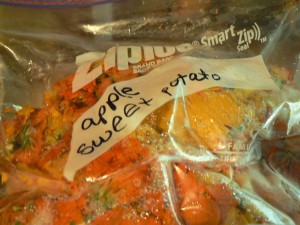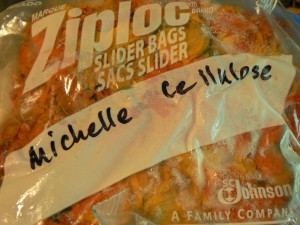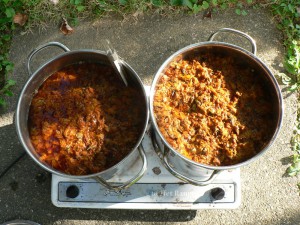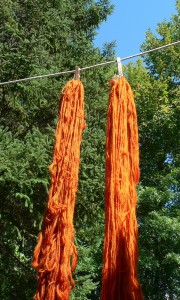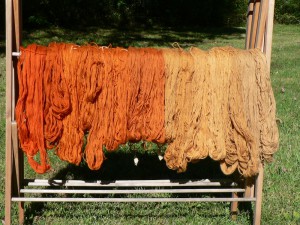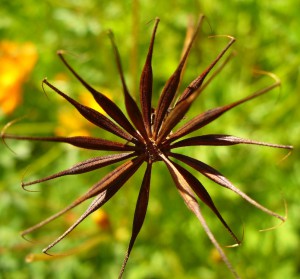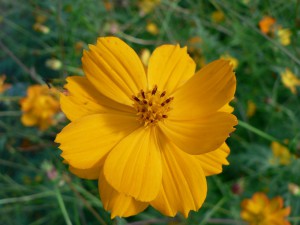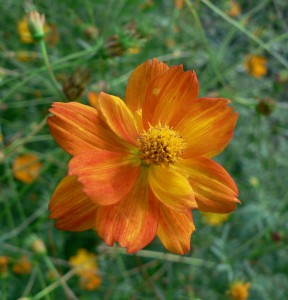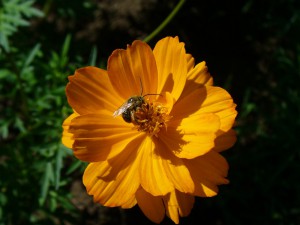At this time of year there are a lot of things to harvest, including dye plants. Some things can be strung up to dry, such as marigold blossoms. Other things, such as orange cosmos flowers, I store in the freezer. When the first cosmos were ready to pick a few weeks ago, I realized that our freezer was still full of bags of cosmos I froze last summer! So on September 1st I decided I’d better make some room. Cosmos are easy to distinguish from pesto, ginger, and the other non-commercial items in our freezer, which is lucky because I had re-used zip-lock bags last summer and you can see that the labels weren’t helpful.
This is not good practice. Label your bags accurately! It is probably also not good practice to store food and non-food things in the same freezer, but we only have one freezer so that’s how it is.
I made a very strong dyebath using 5 lb. of frozen orange cosmos flowers. Since my pots are pretty small, I divided the quantity between two 2-gallon pots, and ran two baths simultaneously.
Orange cosmos are pH sensitive, and you get much redder colors if the pH is high. After straining out the flowers, I used ammonia to increase the pH. I have run out of pH test strips at the moment so I can’t tell you exactly what it was. In the initial dyebaths I added 4 Tbs. ammonia per pot (about one and a half gallons of liquid) before adding the yarn. For each subsequent exhaust bath I added 2 Tbs. ammonia. The yarn is 4 ply rug wool (Helsingin Villakehraamo from Finland, bought at the Hill Institute a few years ago), premordanted with aluminum sulfate.
In total, over the course of about 2 weeks, I dyed over 3lb. of wool. Yes, at one point the dyebath did get moldy while it sat idle for a few days when I was scouring and mordanting more yarn. Additional ammonia and some stirring did the trick. Here are the first two skeins as they were drying.
And here are all of the skeins now that they are rinsed and dried. There were 8 baths in total. I got a lovely wide range of color, as you can see. It is interesting to me that there is such a big difference in color between the 4th and 5th exhaust, and I’m not sure why that happened. It would have been nice if the shift were a bit more gradual. However, I plan to use these in a rya rug, so I can do additional color blending as I tie the knots.
Orange cosmos are gorgeous. Even the seeds are beautiful.
I’ve been saving my own seeds for many years now, and they are easy to save. I started growing them in 2001 with “Cosmic Orange” and “Cosmic Yellow” seed from Johnny’s. In 2002 I used saved seed from Johnny’s plus new seed from Seeds of Change (“Bright Lights”). I guess what I have now is some combination of these. The plants tend to be tall (4-5 feet) and produce a variety of colors including yellow, orange, and red-orange stripes.
They are easy to grow from seed, are tolerant of neglect, and don’t seem to need any special soil conditions. And they are great for attracting pollinators to your garden.

